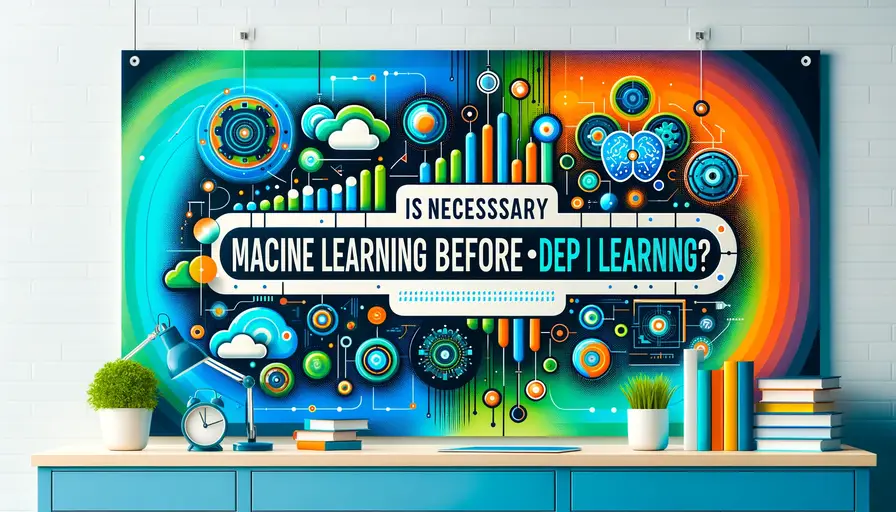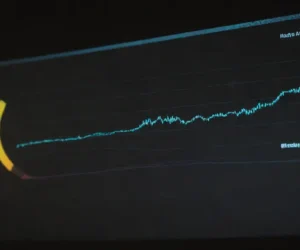
Is Machine Learning Necessary Before Deep Learning?

Machine Learning and Deep Learning
Machine learning (ML) and deep learning (DL) are transformative technologies that have revolutionized numerous fields, from healthcare to finance. Understanding the relationship between ML and DL and whether ML is a prerequisite for DL is crucial for anyone venturing into these domains.
What is Machine Learning?
Machine learning is a subset of artificial intelligence (AI) that involves training algorithms to learn from and make predictions or decisions based on data. ML algorithms can be categorized into supervised learning, unsupervised learning, and reinforcement learning.
What is Deep Learning?
Deep learning is a subset of machine learning that uses neural networks with many layers (hence "deep") to analyze various factors of data. DL excels in tasks involving large datasets and complex patterns, such as image and speech recognition.
The Relationship Between ML and DL
ML and DL are intrinsically connected, with DL being an advanced form of ML. While ML involves a wide range of algorithms like decision trees, support vector machines, and regression models, DL specifically refers to deep neural networks.
The Role of Clustering in Machine LearningFundamental Concepts of Machine Learning
Before diving into deep learning, understanding the basic concepts of machine learning can provide a solid foundation. These concepts are crucial for grasping more advanced topics in DL.
Supervised Learning
Supervised learning involves training a model on labeled data, where the input-output pairs are known. The model learns to map inputs to outputs based on this training data.
Example: Linear Regression in Python
Here’s an example of implementing a simple linear regression model using Scikit-Learn:
import pandas as pd
from sklearn.model_selection import train_test_split
from sklearn.linear_model import LinearRegression
from sklearn.metrics import mean_squared_error
# Load dataset
data = pd.read_csv('data.csv')
X = data.drop(columns=['target'])
y = data['target']
# Split data
X_train, X_test, y_train, y_test = train_test_split(X, y, test_size=0.2, random_state=42)
# Train model
model = LinearRegression()
model.fit(X_train, y_train)
# Make predictions
predictions = model.predict(X_test)
# Evaluate model
mse = mean_squared_error(y_test, predictions)
print(f"Mean Squared Error: {mse}")Unsupervised Learning
Unsupervised learning involves training a model on data without labeled responses. The goal is to identify underlying patterns or groupings within the data.
Unleashing Machine Learning AI: Explore Cutting-Edge ServicesExample: K-means Clustering in Python
Here’s an example of implementing K-means clustering using Scikit-Learn:
import numpy as np
import matplotlib.pyplot as plt
from sklearn.cluster import KMeans
# Generate synthetic data
X = np.random.rand(100, 2)
# Apply K-means clustering
kmeans = KMeans(n_clusters=3, random_state=42)
kmeans.fit(X)
# Plot the results
plt.scatter(X[:, 0], X[:, 1], c=kmeans.labels_, cmap='viridis')
plt.scatter(kmeans.cluster_centers_[:, 0], kmeans.cluster_centers_[:, 1], s=300, c='red', marker='X')
plt.xlabel('Feature 1')
plt.ylabel('Feature 2')
plt.title('K-means Clustering')
plt.show()Reinforcement Learning
Reinforcement learning involves training a model to make a sequence of decisions by rewarding it for correct decisions and penalizing it for incorrect ones. This type of learning is used in scenarios where the model interacts with an environment.
Example: Simple Q-Learning in Python
Here’s an example of implementing a basic Q-learning algorithm using Python:
import numpy as np
# Define the environment
states = ['A', 'B', 'C', 'D']
actions = ['left', 'right']
rewards = {'A': {'left': 0, 'right': 1}, 'B': {'left': 1, 'right': 0}, 'C': {'left': 1, 'right': 0}, 'D': {'left': 0, 'right': 1}}
q_table = {state: {action: 0 for action in actions} for state in states}
# Define parameters
alpha = 0.1
gamma = 0.9
epsilon = 0.1
episodes = 100
# Q-learning algorithm
for _ in range(episodes):
state = np.random.choice(states)
while state != 'D':
if np.random.uniform(0, 1) < epsilon:
action = np.random.choice(actions)
else:
action = max(q_table[state], key=q_table[state].get)
reward = rewards[state][action]
next_state = 'D' if state == 'C' and action == 'right' else state
q_table[state][action] = q_table[state][action] + alpha * (reward + gamma * max(q_table[next_state].values()) - q_table[state][action])
state = next_state
print(q_table)Advancing to Deep Learning
Transitioning from machine learning to deep learning involves understanding how neural networks function and why they are effective for complex tasks.
Is Cheap Machine Learning AI Effective for Small Businesses?Understanding Neural Networks
Neural networks are computational models inspired by the human brain, consisting of layers of interconnected nodes (neurons). Each connection has a weight that adjusts as learning proceeds, allowing the network to make accurate predictions.
Example: Neural Network in Python Using TensorFlow
Here’s an example of implementing a simple neural network using TensorFlow:
import tensorflow as tf
from tensorflow.keras.models import Sequential
from tensorflow.keras.layers import Dense
# Load dataset
data = tf.keras.datasets.mnist
(X_train, y_train), (X_test, y_test) = data.load_data()
# Preprocess data
X_train, X_test = X_train / 255.0, X_test / 255.0
# Build neural network model
model = Sequential([
tf.keras.layers.Flatten(input_shape=(28, 28)),
Dense(128, activation='relu'),
Dense(10, activation='softmax')
])
# Compile model
model.compile(optimizer='adam', loss='sparse_categorical_crossentropy', metrics=['accuracy'])
# Train model
model.fit(X_train, y_train, epochs=5)
# Evaluate model
test_loss, test_acc = model.evaluate(X_test, y_test)
print(f"Test accuracy: {test_acc}")Convolutional Neural Networks (CNNs)
Convolutional neural networks (CNNs) are specialized neural networks designed for processing structured grid data like images. They utilize convolutional layers to extract features from the input data.
Example: CNN for Image Classification in Python
Here’s an example of implementing a CNN for image classification using Keras:
Understanding Long Short Term Memory (LSTM) in Machine Learningimport tensorflow as tf
from tensorflow.keras.models import Sequential
from tensorflow.keras.layers import Conv2D, MaxPooling2D, Flatten, Dense
# Load dataset
data = tf.keras.datasets.cifar10
(X_train, y_train), (X_test, y_test) = data.load_data()
# Preprocess data
X_train, X_test = X_train / 255.0, X_test / 255.0
# Build CNN model
model = Sequential([
Conv2D(32, (3, 3), activation='relu', input_shape=(32, 32, 3)),
MaxPooling2D((2, 2)),
Conv2D(64, (3, 3), activation='relu'),
MaxPooling2D((2, 2)),
Flatten(),
Dense(64, activation='relu'),
Dense(10, activation='softmax')
])
# Compile model
model.compile(optimizer='adam', loss='sparse_categorical_crossentropy', metrics=['accuracy'])
# Train model
model.fit(X_train, y_train, epochs=10)
# Evaluate model
test_loss, test_acc = model.evaluate(X_test, y_test)
print(f"Test accuracy: {test_acc}")Recurrent Neural Networks (RNNs)
Recurrent neural networks (RNNs) are designed for sequential data such as time series and natural language. They use loops within the network to maintain information about previous inputs.
Example: Simple RNN for Text Generation in Python
Here’s an example of implementing a simple RNN for text generation using Keras:
import numpy as np
import tensorflow as tf
from tensorflow.keras.models import Sequential
from tensorflow.keras.layers import Dense, SimpleRNN, Embedding
# Load dataset
text = open('shakespeare.txt').read()
chars = sorted(set(text))
char_to_index = {c: i for i, c in enumerate(chars)}
index_to_char = {i: c for i, c in enumerate(chars)}
# Preprocess data
seq_length = 100
X = []
y = []
for i in range(len(text) - seq_length):
X.append([char_to_index[c] for c in text[i:i+seq_length]])
y.append(char_to_index[text[i+seq_length]])
X = np.array(X)
y = np.array(y)
# Build RNN model
model = Sequential([
Embedding(len(chars), 50, input_length=seq_length),
SimpleRNN(128),
Dense(len(chars), activation='softmax')
])
# Compile model
model.compile(optimizer='adam', loss='sparse_categorical_crossentropy')
# Train model
model.fit(X, y, epochs=20)
# Generate text
seed = "To be, or not to be, that is the question:\n"
generated = seed
for _ in range(100):
X_pred = np.array([[char_to_index[c] for c in seed[-seq_length:]]])
pred = model.predict(X_pred, verbose=0)
next_char = index_to_char[np.argmax(pred)]
generated += next_char
seed += next_char
print(generated)Advantages of Learning Machine Learning Before Deep Learning
While it is possible to dive directly into deep learning, having a foundation in machine learning can offer several advantages.
Building a Strong Foundation
Understanding the basics of machine learning provides a solid foundation for grasping more complex deep learning concepts. It helps in understanding how different algorithms work and their applications.
Choosing Reinforcement Learning Models: A Comprehensive GuideImproved Problem-Solving Skills
Learning machine learning first enhances problem-solving skills. It allows individuals to approach problems methodically, understanding the importance of data preprocessing, feature engineering, and model evaluation.
Example: Feature Engineering in ML
Here’s an example of feature engineering using Scikit-Learn:
import pandas as pd
from sklearn.preprocessing import StandardScaler, OneHotEncoder
from sklearn.compose import ColumnTransformer
from sklearn.pipeline import Pipeline
# Load dataset
data = pd.read_csv('data.csv')
X = data.drop(columns=['target'])
y = data['target']
# Define preprocessing steps
numeric_features = ['age', 'income']
numeric_transformer = StandardScaler()
categorical_features = ['gender', 'occupation']
categorical_transformer = OneHotEncoder()
preprocessor = ColumnTransformer(
transformers=[
('num', numeric_transformer, numeric_features),
('cat', categorical_transformer, categorical_features)
])
# Create preprocessing pipeline
pipeline = Pipeline(steps=[('preprocessor', preprocessor)])
# Apply preprocessing
X_preprocessed = pipeline.fit_transform(X)
print(X_preprocessed)Better Understanding of Data
Machine learning emphasizes the importance of understanding and manipulating data, which is crucial for any data-driven task. Skills learned in ML, such as data cleaning and normalization, are directly applicable in DL.
Transitioning from Machine Learning to Deep Learning
Transitioning from machine learning to deep learning involves building on existing knowledge and diving into more advanced topics.
Understanding the Distinction: Neural Networks vs Machine LearningUnderstanding the Shift
The shift from machine learning to deep learning is marked by moving from algorithms that require feature engineering to those that learn features on their own. Deep learning models like CNNs and RNNs automatically extract relevant features from raw data.
Example: Transitioning to CNNs
Here’s an example of transitioning from a traditional ML approach to using a CNN:
import tensorflow as tf
from tensorflow.keras.models import Sequential
from tensorflow.keras.layers import Conv2D, MaxPooling2D, Flatten, Dense
# Load dataset
data = tf.keras.datasets.fashion_mnist
(X_train, y_train), (X_test, y_test) = data.load_data()
# Preprocess data
X_train, X_test = X_train / 255.0, X_test / 255.0
X_train = X_train.reshape(-1, 28, 28, 1)
X_test = X_test.reshape(-1, 28, 28, 1)
# Build CNN model
model = Sequential([
Conv2D(32, (3, 3), activation='relu', input_shape=(28, 28, 1)),
MaxPooling2D((2, 2)),
Conv2D(64, (3, 3), activation='relu'),
MaxPooling2D((2, 2)),
Flatten(),
Dense(128, activation='relu'),
Dense(10, activation='softmax')
])
# Compile model
model.compile(optimizer='adam', loss='sparse_categorical_crossentropy', metrics=['accuracy'])
# Train model
model.fit(X_train, y_train, epochs=10)
# Evaluate model
test_loss, test_acc = model.evaluate(X_test, y_test)
print(f"Test accuracy: {test_acc}")Embracing Neural Network Frameworks
Learning deep learning involves embracing frameworks such as TensorFlow and PyTorch, which provide powerful tools for building and training neural networks.
Continuous Learning
Transitioning to deep learning is a continuous learning process. Staying updated with the latest research and advancements in the field is crucial for mastering deep learning techniques.
Challenges and Considerations
While deep learning offers powerful capabilities, it also comes with its own set of challenges and considerations.
Computational Resources
Deep learning models require significant computational resources. Access to GPUs and cloud computing platforms, like AWS and Google Cloud, can be crucial for training large models.
Data Requirements
Deep learning models require large amounts of labeled data to achieve high performance. Ensuring data quality and quantity is essential for building effective deep learning models.
Example: Using Cloud for DL Training
Here’s an example of using Google Cloud for training a deep learning model:
from google.cloud import storage
import tensorflow as tf
# Set up Google Cloud Storage
client = storage.Client()
bucket = client.get_bucket('your-bucket-name')
blob = bucket.blob('data.csv')
blob.download_to_filename('data.csv')
# Load dataset
data = pd.read_csv('data.csv')
X = data.drop(columns=['target'])
y = data['target']
# Preprocess data
X_train, X_test, y_train, y_test = train_test_split(X, y, test_size=0.2, random_state=42)
X_train = X_train / 255.0
X_test = X_test / 255.0
# Build model
model = Sequential([
Dense(128, activation='relu', input_shape=(X_train.shape[1],)),
Dense(10, activation='softmax')
])
# Compile model
model.compile(optimizer='adam', loss='sparse_categorical_crossentropy', metrics=['accuracy'])
# Train model
model.fit(X_train, y_train, epochs=10)
# Evaluate model
test_loss, test_acc = model.evaluate(X_test, y_test)
print(f"Test accuracy: {test_acc}")Interpretability
Deep learning models are often referred to as "black boxes" due to their complexity and lack of interpretability. Understanding how a model makes decisions is crucial for trust and regulatory compliance.
While it is not strictly necessary to learn machine learning before deep learning, doing so provides a strong foundation that can make understanding and applying deep learning concepts easier. Machine learning offers essential skills in data handling, problem-solving, and algorithmic thinking, which are beneficial when diving into the more complex world of deep learning. By building a solid ML foundation, one can transition more smoothly into deep learning, leveraging the strengths of both to solve complex, real-world problems.
If you want to read more articles similar to Is Machine Learning Necessary Before Deep Learning?, you can visit the Artificial Intelligence category.



You Must Read